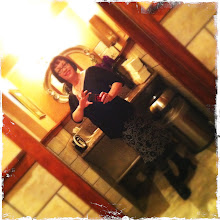
by NatyaHara
http://www.natyahara.com/
Natya Hara is a concept combining the various references to sacred dance and the abdomen. A play on words I suppose, but an idea to convey the idea of being in one's personal power, dance of the womb.
The word “natya” is a sanskrit word meaning “dance”. In Bharat Natyam (classical Indian dance), three modes of movement encompasses the range of aesthetic possibilities: Nritta, Nritya, and Natya. Nritta is abstract or "pure" movement - is it pure dance devoid of emotional expression wherein dancers use body movements and pounding rhythmic footwork to create visual geometric patterns vibrating with dynamic energy. Nritya is lyrical dance that interprets poetry. Dancers use conventional hand gestures called mudras along with facial expressions and feelings to express the meanings or interpretations of the lyrics or text. Natya describes dance-drama that enacts a narrative or idea. In Natya, dancers use both pose and expressional aspects along with mime to create drama. The Natya Shastra is the oldest surviving text on stagecraft in the world.
“Hara” is a Japanese word meaning center of the body – usually referring to the navel or solar plexus, aka “belly”. There are discrepancies among the various interpretations of the chakra system, some sources state the hara is located at the solar plexus/3rd chakra while others describe it as the sacral hara chakra/2nd chakra. There are sources that reference the hara encompassing the abdominal cavity from the solar plexus to the pubic bone, thus combining the idea of chakras 2 and 3.
Cultures such as those of India, China, Japan, and Africa acknowledge the belly as the point of physical access to spiritual power. Such cultures offer practical ways (yoga, hara training, traditions of dance, rituals of healing, martial arts) to develop the belly as a source of spiritual strength.
The Japanese term for the belly and its transpersonal power is hara. The value which the Japanese culture places upon developing hara ("hara wo neru") shows up in the way the word occurs in idioms of common usage. The fully mature person, for example, is known as "hara no okii hito"—the one who has finished his belly. "Haragei" literally means "belly art" is the art of concentrating ki in the abdomen. The hara is viewed as the seat of personal power. The vocalizations in martial arts, “kiai!” does not originate from the throat, but the hara.
In nature the hara is a vulnerable place: animals protect their soft underbellies. It is an indication of trust when they allow you to pet or rub its belly. In humans, the belly is a vulnerable place as well. So much attention is placed on what it looks like and for many it is a source of personal insecurity. We are taught the abdomen it to be held tight and must be flat. A wonder if many are able to breathe deeply. Our emotions are represented in the belly - the visceral center/the seat of emotions.
The hara, also described 3 finger widths below the navel, is the warehouse which stores a woman's life-affirming, self-affirming energy connecting emotional and intellectual centers.

No comments:
Post a Comment